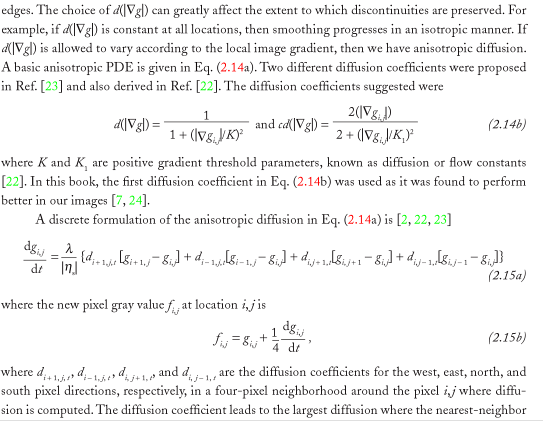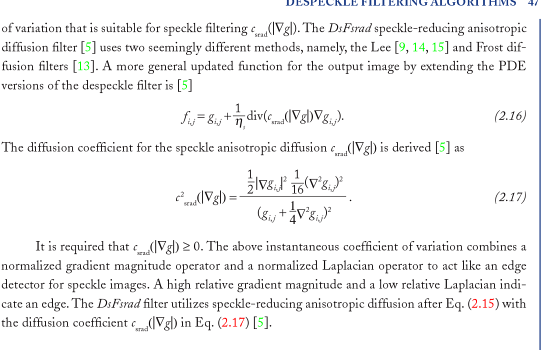I am working with speckle noise reduction in ultrasound images. At present I am learning about anisotropic diffusion.I will explain first what I have understood about anisotropic diffusion. I learnt the difference between isotropic and anisotropic diffusion using the diagram below:

In case of isotropic diffusion diffusion of the pixel value takes place all across the image.This result in blurring of edges whereas in case of anisotropic diffusion smoothing or diffusion is carried out depending on the image edges and their direction. It smoothens homogeneous image regions but retains image edges. (I know that the tool that is used to find the strength of the edges and the direction is gradient but I need some more explanation on what is gradient? How we calculate gradient? Please explain me in a lucid manner I have zero knowledge about gradient. Please explain me with easy explanation) Based on this gradient value we perform smoothing. If the magnitude of the gradient is small then smoothing is done. If the magnitude of the gradient is large then smoothing is stopped.

This graph illustrates the relationship between anisotropic diffusion and gradient magnitude.In the figure the orginal signal is noisy but 2 major peaks are still visible.Applying the diffusison process to the original signal and using the gradient magnitude to attenuate the diffusion process at places where the diffusion process at places
where the edges is strong produce a signal in which the SNR is high.The diffusion at the edges of the signals is attenuated by using a function of the gradient magnitude.(This gradient magnitude equation is what I am unable to understand please see the following equation and explain me in detail. I don't Know why they use divergence and gradient )




( I couldn't able to understand these equations. please explain the equations in relation with the theory above)
